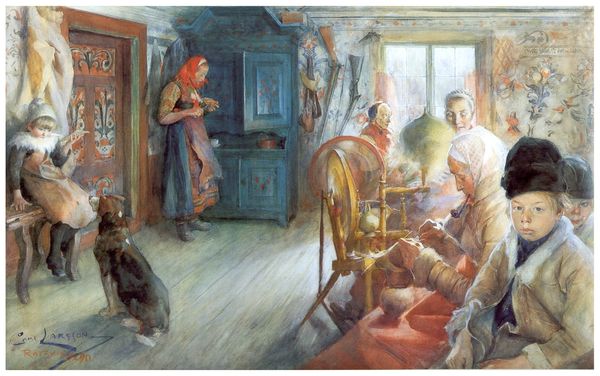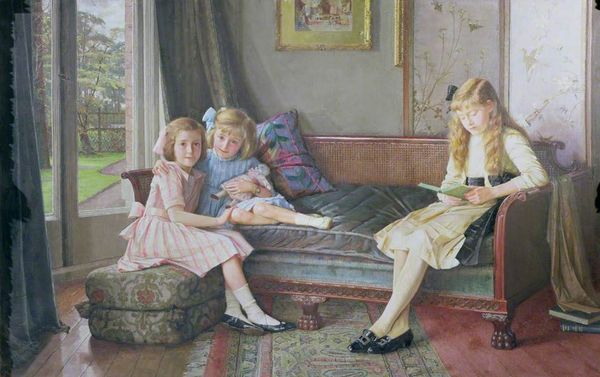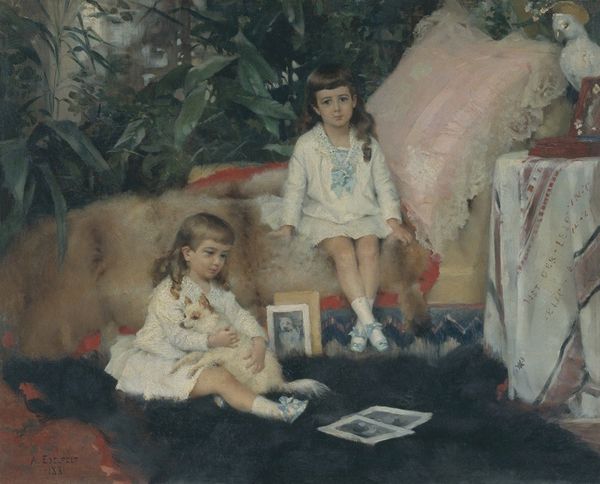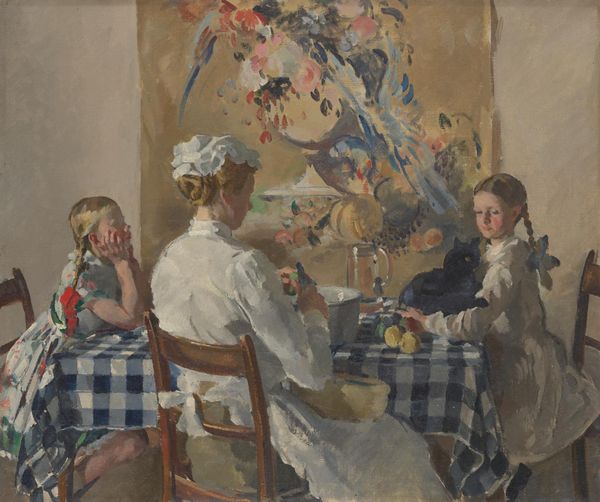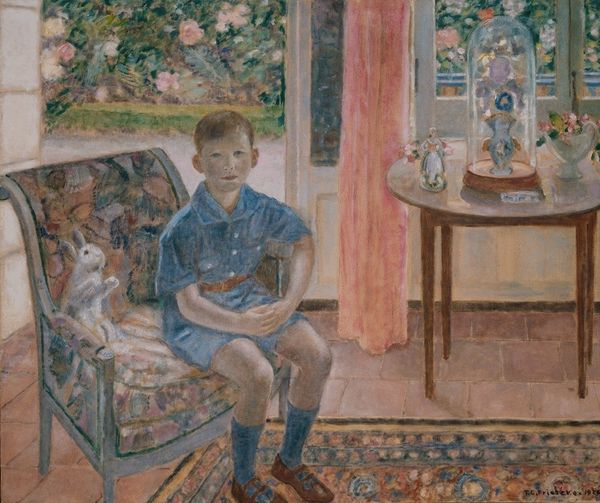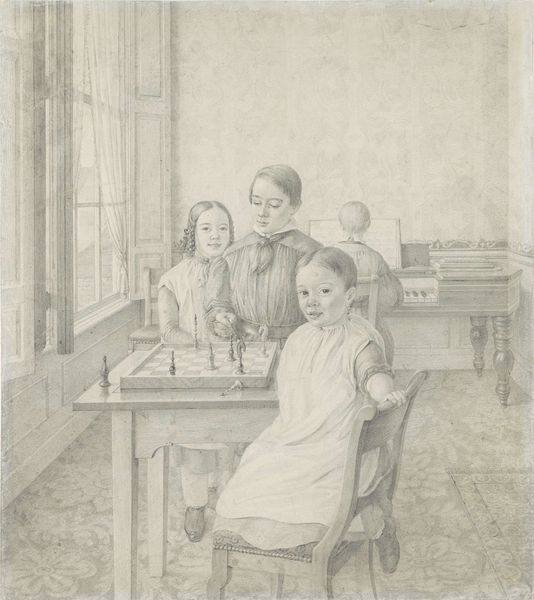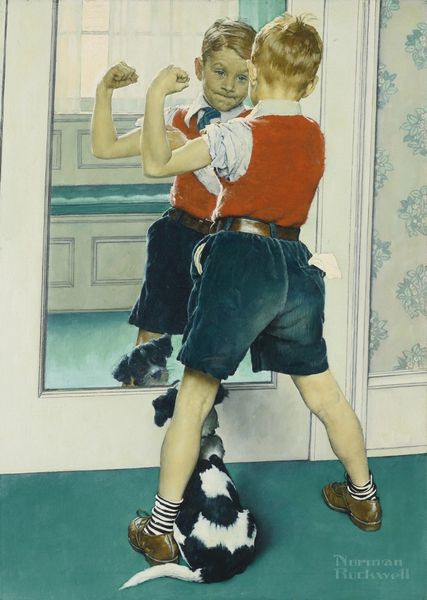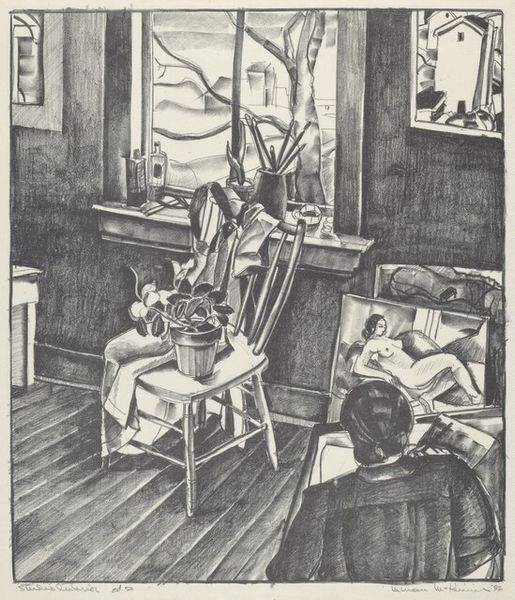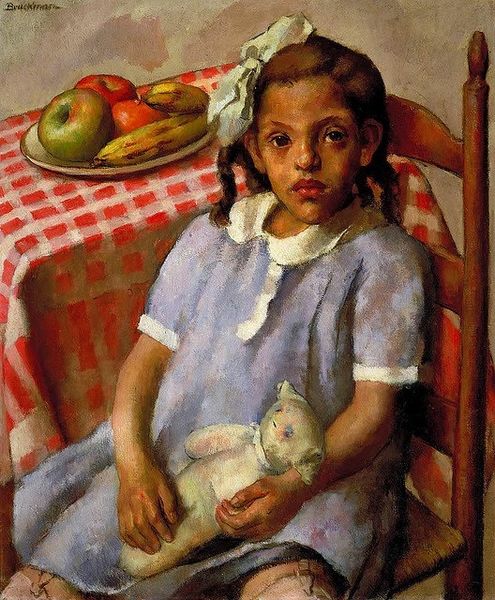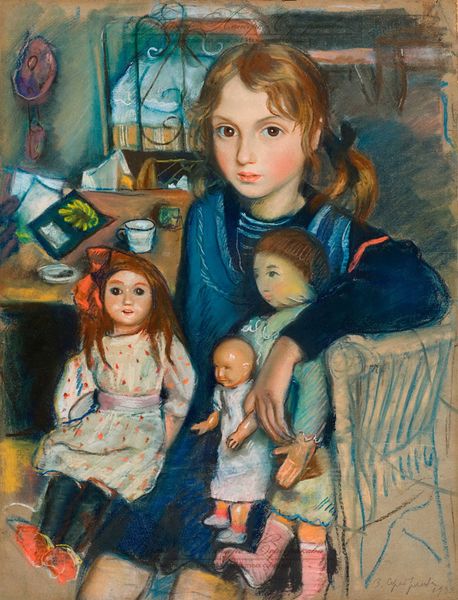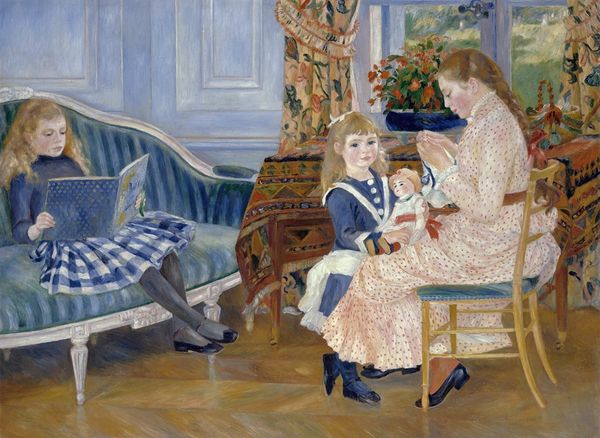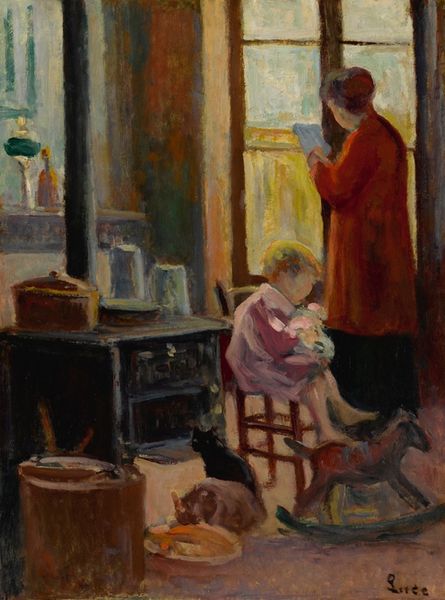
Copyright: Public domain
Editor: Here we have Carl Larsson’s “Christmas Morning” from 1894, a delightful watercolour. I’m immediately struck by the chaos and energy; it feels like a snapshot of a real family Christmas. How do you approach a piece like this? What catches your eye? Curator: Initially, it's the structure that commands attention. Larsson orchestrates a dynamic arrangement using the children's poses, and the lines of the furniture to lead our eye. Do you notice the way he uses colour, particularly the reds, to punctuate the composition, creating a sense of visual rhythm? Editor: I do see that now. The red is almost a little too saturated to be "realistic." Curator: Precisely! Consider, then, how the application of watercolour – the very materiality of the piece – informs our understanding. The thin washes and delicate details, set against areas of heavier pigment, establish an internal visual logic. The "realism," as you suggest, is a choice rather than a faithful replication. Do you see it impacting the overall dynamism? Editor: Absolutely, it amplifies it! There’s an energy to the strokes themselves. So, you are saying it is less about what it *is* but how it *exists*? Curator: Precisely! We must concern ourselves with how the visual elements interact to generate meaning. Larsson isn’t simply representing a Christmas morning; he’s constructing a visual experience. Notice how he places his signature at the bottom. What would this small act suggest, if anything, about its larger meaning or experience? Editor: I see your point. Thinking about art in this way lets us explore beyond just the subject, but the visual story the art tries to tell us. Curator: Indeed. And recognizing the construction of that visual story enhances our own understanding of art.
Comments
No comments
Be the first to comment and join the conversation on the ultimate creative platform.

